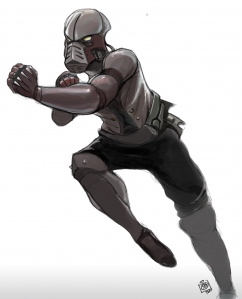
With apropulsive cyborg gait videos, IQ measures using gait observation, and distance running clinics to observe and improve biomechanics, the sports medicine community (and the general public) has a widespread interest in the significance of “gait.”
In this month’s BJSM Editor’s Choice section (free online!) Noehren, Scholz, and Davis investigate the role of hip mechanics in patellofemoral pain syndrome (PFPS).
They studied whether gait retraining using real-time feedback improves hip mechanics and reduces pain in PFPS patients.
They found that:
- Subjects reduced their hip adduction angle during running by 5.0° or 23% following gait retraining
- The reduction in hip internal rotation was less consistent across subjects and thus not statistically significant
- Gait retraining resulted in a significant (86%) reduction in pain, as well as improvement in function.
While this adds credence to the important role of underlying mechanics in injury assessment and treatment, the authors also point out the need for more research on gender differences in biomechanics and longitudinal analyses (over one month) of the effects of gait retraining.
Interested in more study outcomes? Read the complete article online.